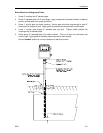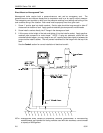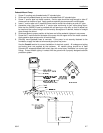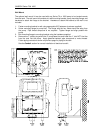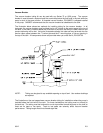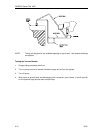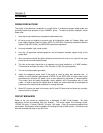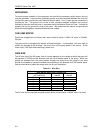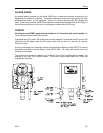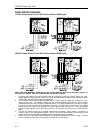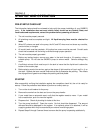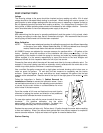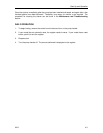
9312 3-1
Section 3
WIRING
WIRING PRECAUTIONS
The quality of the electrical installation is a major factor in maintaining proper safety levels and
providing trouble-free operation of your GASBOY pump. To assure a quality installation, follow
these rules:
1. Have the pump installed by a competent installer/electrician.
2. All wiring must be installed to conform with all building/fire codes, all Federal, State, and
Local codes, National Electrical Code, (NFPA 70), NFPA 30, Automotive and Marine Service
Station Code (NFPA 30A), and NFPA 395 codes and regulations.
3. Use only threaded, rigid, metal conduit.
4. Use only UL-approved insulated gasoline- and oil-resistant stranded copper wiring of the
proper size.
5. Wire connections should be tightly spliced and secured with a wire nut; close off the open
end of the wire nut with electrical tape.
6. The line to the motor should be on a separate circuit and installed on a 15 AMP breaker.
This should be sufficient for either 115V, 60 cycle or 230V, 50 cycle operation.
7. The unit must be properly grounded.
8. Install an emergency power cutoff if the pump is used for other than personal use. In
addition to circuit breaker requirements of NFPA 70 and NFPA 30A, a single control which
simultaneously removes AC power from all site dispensing equipment is recommended.
This control must be readily accessible, clearly labeled, and in accordance with all local
codes. In order to provide the highest level of safety, we recommend that all employees be
trained as to the location and procedure for turning off power.
9. When DC pulsers are used in the pump, the AC and DC wires must not share any conduits,
junction boxes, or troughs.
CIRCUIT BREAKERS
Power to the unit should be supplied from a dedicated 15 AMP circuit breaker. No other
equipment should be powered from this breaker. This motor draws the following current:
115VAC, 60 cycle, 5.1 amps; 230VAC, 50 cycle, 1.95 amps. If two (2) pumps are supplied from
one breaker, that breaker must be capable of handling the load of both motors. Provisions must
be made to break both legs of any AC circuit.





